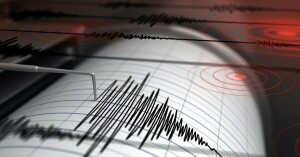Certain volatility-linked investment strategies could ramp up selling of equities if turbulence in the stock market, which has been stoked by the US Federal Reserve’s hawkish stance on interest rate rises, gets much worse.
“Volatility control funds,” systematic investment strategies that take their trading cues from market volatility levels, had been steady buyers of equities since mid-June, when US stocks entered a bear market rally, rebounding 17.4% up until Aug. 16.
But the S&P 500’s sharp retreat of 8% over the last two weeks, driven by worries the Fed will continue to hike interest rates in a bid to tame inflation, is pushing these funds closer to the levels of market turbulence at which they start to shed stocks at an accelerated pace.
That’s a worry for investors since there is evidence volatility-control funds can be a strong pro-cyclical force in bear markets, helping to further exacerbate sell-offs. And September has historically been the toughest month for the US stock market.
“As volatility has trended lower over the last month to month and a half, these strategies had started to innately dip their toes into the market again, buying around $3 billion a day per our model,” said Max Grinacoff, equity derivative strategist at BNP Paribas.
“To the extent that realized volatility starts to pick up again, that buying could cease.”
One-month realized volatility for S&P 500, a measure of actual stock swings over the past month, dipped to a four-month low of around 16 in mid-August, but has rebounded to 20, as of Thursday.
The exact level of turbulence at which volatility-control funds turn sellers in a big way is hard to estimate, since it depends on various factors, including the funds’ current equity exposure and the amount of risk individual funds target.
But Grinacoff estimates that a pickup in S&P 500 one-month realized volatility to between 35 and 40 could cause these funds to sell around $10 billion over the course of a week.
Barclays estimates that volatility-control funds currently have around $200 billion in assets under management (AUM), while Deutsche Bank pegs it at about $250 billion.
Although that is modest relative to the roughly $35 trillion value of the S&P 500 alone, such funds bear watching. As buyers in rising markets and sellers when stocks tumble, they can often accelerate price swings in either direction, said analysts.
“That makes them punch well above their AUM weight,” said Parag Thatte, a strategist at Deutsche Bank.
Some market participants might anticipate that these funds will sell and try to sell ahead of them, Barclays equity derivatives strategist Stefano Pascale.
“There may be a psychological aspect to it,” Pascale said.
History suggests, however, that these funds are a more potent force in falling markets than when stocks are rising.
That’s because markets tend to turn volatile quickly but then take time to calm down, meaning such funds can deliver more concentrated selling pressure as they react to accelerating volatility than the buying force they exert when markets stabilize.
During the first quarter — the most intense period of selling this year — volatility-control funds were shedding as much as $25 billion a day, according to Pascale. But when volatility started to settle down from mid-June, they had been adding only about $0.5 billion a day, Pascale said.
“We think if these funds have some impact, it will probably be more in a scenario where volatility continues to rise,” he said.—Reuters






















Comments
Comments are closed.